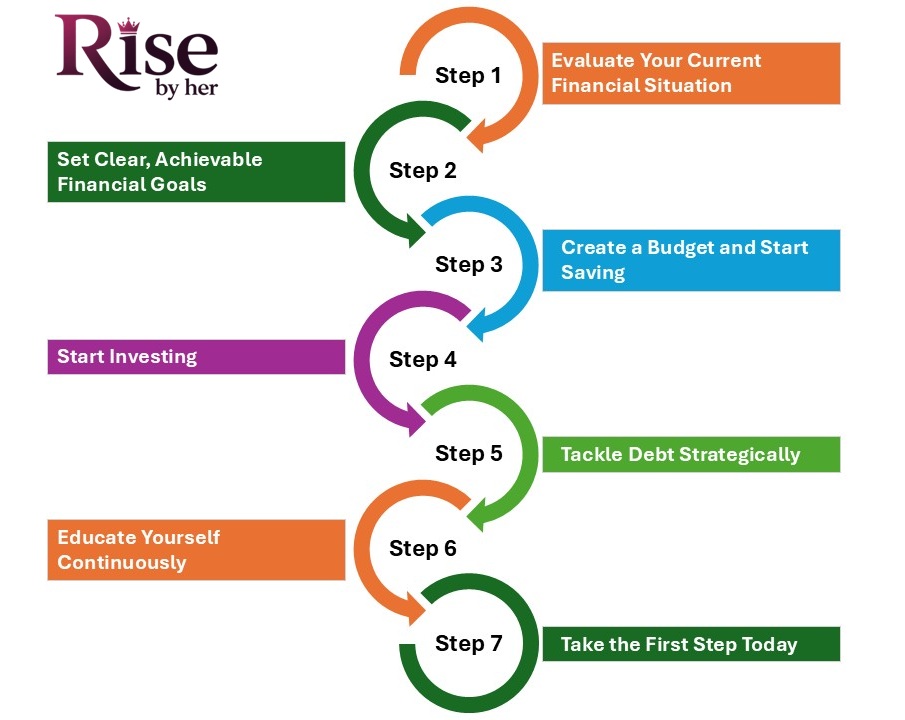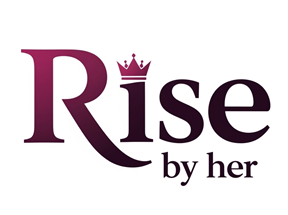What Financial Independence Really Means for Women
Financial independence for women is about much more than just having a high income or large savings. It’s the ability to make decisions based on your personal values, desires, and goals, rather than being limited by financial constraints. Achieving financial independence means freedom, the freedom to choose how you live, where you work, and who you spend time with, without constantly worrying about money. It’s about taking control of your financial future and building a life that reflects your priorities.
For women, financial independence goes beyond wealth accumulation. It means having the confidence to make empowered decisions for yourself and your family. Whether it’s pursuing your career goals, leaving an unsatisfying relationship, or planning for a comfortable retirement, being financially independent gives you the power to make these choices with security and peace of mind. Today, financial independence is crucial for women due to the unique challenges we face, like the gender pay gap, longer life expectancies, and career breaks. By working toward financial independence, women can protect themselves against unexpected events and ensure they have the resources to live life on their own terms, regardless of what comes their way.
Ready to start your journey toward financial independence? Get ready to discover the tools and resources that will guide you on your path to financial independence!
Assessing Your Current Financial Situation
The first step in achieving financial independence as a woman is assessing your current financial situation. Understanding where you stand financially helps you create a clear roadmap for growth. Here’s how you can assess your finances:
Evaluate Your Income and Expenses
Start by evaluating your income and expenses. Track all sources of income (salary, freelance work, investments) and categorize your monthly expenses (housing, utilities, groceries, etc.). This simple step helps you understand how much you earn versus how much you spend, allowing you to identify areas where you can cut back or increase savings.
Calculate Your Net Worth
Net worth calculation is essential to determine your financial health. To calculate it, list all your assets (such as savings, investments, property) and subtract your liabilities (like student loans, credit card debt, and mortgages). The result is your net worth, which offers a snapshot of your overall financial status. Tracking this figure regularly allows you to see your progress toward financial independence.
Practice Financial Self-Awareness
Self-awareness is crucial for financial growth. Take time to reflect on your spending habits, saving patterns, and financial decisions. Are you saving enough for emergencies, retirement, and future goals? Understanding where your money is going is the first step toward making better financial choices.

By assessing your income, expenses, debts, and net worth, you can create a plan to build wealth and work toward achieving financial independence.
Setting Clear, Achievable Financial Goals
Setting clear, achievable financial goals for women is key to achieving financial independence. Whether your goals are short-term or long-term, creating a roadmap to reach them is essential. Here’s how to approach your goals:
Short-Term vs. Long-Term Goals
Start by differentiating between short-term financial goals (1-3 years) and long-term goals (5-10 years or more). Short-term goals may include creating an emergency fund, paying off credit card debt, or saving for a vacation. Long-term goals might involve homeownership, building a retirement fund, or planning for early retirement. Both types of goals are important, but they require different strategies and timelines.
Examples of Financial Goals for Women
Here are a few financial goals examples that can help guide your journey to financial independence:
- Emergency Fund: Aim to save 3-6 months’ worth of expenses for unexpected situations.
- Travel Fund: Saving for a dream vacation or exploring new destinations.
- Homeownership: Saving for a down payment to buy your first home.
- Early Retirement: Building enough savings and investments to retire before the traditional retirement age.
Align Goals with Your Values
It’s important to align your financial goals with your values and lifestyle. Reflect on what truly matters to you, whether it’s financial security, freedom to travel, or living debt-free and set goals that support these values. When your goals reflect your priorities, staying motivated and committed to achieving them becomes easier.
By setting clear financial goals, you create a solid foundation for building wealth and achieving financial independence.
Budgeting and Saving Strategies That Work
Creating a budgeting plan for women is essential to achieving financial independence. Effective budgeting helps you manage your income, reduce expenses, and save consistently. Here are some budgeting methods and saving strategies that can make a significant difference:

Budgeting Methods Women Love
There are several budgeting methods that can help you stay on track:
- Zero-Based Budgeting: Every dollar of your income is allocated to specific categories, ensuring that nothing is left unassigned. This method helps you prioritize savings and expenses.
- 50/30/20 Rule: This simple method divides your income into three categories: 50% for needs (housing, utilities), 30% for wants (entertainment, dining out), and 20% for savings and debt repayment.
- Envelope Method: Allocate a certain amount of cash for each expense category (e.g., groceries, entertainment). Once the envelope is empty, no more spending in that category for the month.
Building Consistent Saving Habits
Saving consistently is key to building wealth. Start small by setting up automatic transfers to your savings account, even if it’s just a small amount each month. This ensures you’re building wealth gradually without stress.
Tools and Apps for Money Management
Use budgeting apps and tools to streamline your financial management. Apps like Mint, YNAB (You Need a Budget), and EveryDollar help you track expenses, set goals, and stay accountable. These tools simplify money management and ensure you’re on the right path to financial independence.
By using these budgeting and saving strategies, you’ll be able to manage your finances more effectively and achieve your financial goals.
Smart Investing for Long-Term Wealth
Investing is key to building long-term wealth, especially for women striving for financial independence. While saving is essential, it’s investing that allows your money to grow and work for you. Here’s how you can start smart investing:
Why Investing is Key to Building Wealth
Saving money alone often isn’t enough to achieve financial independence. The power of compound interest allows investments to grow exponentially over time. Investing in the right vehicles helps you build wealth faster and achieve your long-term financial goals, such as retirement or purchasing real estate.
Beginner-Friendly Investing Options
If you’re new to investing, start with simple, low-risk options:
- Index Funds: These funds allow you to invest in a diversified portfolio of stocks, which minimizes risk. They’re perfect for beginners because of their simplicity and long-term growth potential.
- Retirement Accounts: Contribute to retirement accounts like IRAs or 401(k)s to build wealth for your future. These accounts offer tax advantages and long-term growth, making them essential for retirement planning.
- Real Estate: If you’re looking for tangible investments, consider purchasing real estate. This can provide steady rental income and appreciation over time.
Overcoming the Fear of Investing
Many women hesitate to invest due to fear or myths, such as the belief that investing is too complicated or risky. The truth is, with the right knowledge and guidance, investing can be a straightforward way to build wealth. Start small, educate yourself, and remember that investing is a long-term strategy.
By starting to invest wisely today, you’re setting yourself up for long-term financial success and independence.
Managing and Eliminating Debt
Effectively managing and eliminating debt is essential for women striving for financial independence. Whether dealing with credit cards, student loans, or medical bills, having a clear strategy can significantly reduce your financial stress. Here’s how you can tackle debt more efficiently:
Debt Reduction Methods: Snowball vs. Avalanche
Choosing the right debt repayment strategy can make a big difference:
- Debt Snowball Method: Focus on paying off the smallest debt first while making minimum payments on larger debts. Once the smallest debt is paid off, you’ll move to the next smallest. This method helps you build momentum and provides a psychological boost.
- Debt Avalanche Method: Prioritize the debt with the highest interest rate, allowing you to save more on interest in the long run. Though this approach may take longer to show visible results, it’s typically more cost-effective.
How to Handle Credit Cards, Student Loans, and Medical Bills
Dealing with different types of debt requires personalized approaches:
- Credit Cards: Pay down high-interest credit card debt first. Avoid using cards for unnecessary purchases and focus on paying off balances each month.
- Student Loans: Investigate refinancing or income-driven repayment plans to lower monthly payments. Consolidating loans may also simplify your repayment strategy.
- Medical Bills: Negotiate with medical providers for discounts or set up a payment plan to make medical bills more manageable.
Tips to Avoid High-Interest Traps and Improve Your Credit Score
To avoid high-interest debt traps, stay on top of payments and limit the use of credit. Regularly review your credit score and work to improve it by reducing outstanding balances and maintaining timely payments. A higher credit score helps secure lower-interest loans, making it easier to manage future debt.
By using these strategies, you can work towards eliminating debt and building a solid foundation for financial freedom.
Retirement Planning for Women
Retirement planning for women is crucial yet often overlooked. Women tend to live longer than men, and with career gaps due to caregiving responsibilities, it’s essential to start planning early for a secure retirement. Here’s how to navigate the process:
Why Women Need to Plan More Carefully
Women face unique challenges when it comes to retirement planning:
- Longer Lifespan: Women generally live longer than men, meaning they need to plan for a longer retirement. This increases the need for a larger nest egg to cover living expenses.
- Career Gaps: Many women take time off from work for caregiving, which can impact earnings and retirement savings. These career breaks reduce the amount of money contributed to retirement funds.
How to Start Building a Retirement Fund at Any Age
Regardless of when you start, it’s never too late to begin building a retirement fund:
- Start Small: Even if you’re starting later, contributing small amounts to a retirement savings account can add up over time.
- Automate Contributions: Set up automatic deductions from your paycheck or bank account to ensure consistent contributions.
IRA, 401(k), Pension, and Social Security Basics
Understanding your retirement options is key:
- IRA (Individual Retirement Account): Allows you to save for retirement with tax advantages. There are two types: Traditional IRA (tax-deferred) and Roth IRA (tax-free withdrawals).
- 401(k): Offered by employers, often with matching contributions. Contribute as much as you can to maximize employer contributions.
- Pension: Some employers offer a pension plan that guarantees income in retirement.
- Social Security: Women are often eligible for Social Security benefits, but planning is needed to understand how benefits work and when to start claiming.
By understanding these options and planning strategically, you can ensure a comfortable retirement, regardless of your age or career stage.
Growing Income and Building Multiple Streams
Building multiple income streams is crucial for women striving for financial independence. Relying on a single income source limits growth and leaves you more vulnerable to financial setbacks. By diversifying your earnings, you can gain more stability and financial freedom. Here are some key strategies:
- Side Hustles: Taking on a side hustle is a powerful way to increase your income. Whether it’s freelancing, consulting, or running an online store, side gigs allow you to monetize your skills and passions.
- Upskilling: Learning new skills or certifications in your field can help you qualify for promotions and higher-paying positions. Consider taking online courses, attending workshops, or getting certified in relevant areas.
- Passive Income: Creating opportunities for passive income allows you to earn money with less active effort. Examples include:
- Investing in stocks or real estate to generate dividends or rental income.
- Creating digital products, such as e-books, online courses, or apps, that sell without constant work.
- Monetizing Your Skills: If you have expertise in a particular area, there are plenty of ways to turn your skills into revenue. Some ideas include:
- Offering consulting or coaching services.
- Creating a blog, YouTube channel, or podcast to generate ad revenue or sponsorships.
- Teaching online courses or workshops on platforms like Skillshare or Teachable.
By exploring these strategies and diversifying your income streams, you can significantly boost your financial security and work towards financial freedom.
Building a Wealth Mindset and Financial Confidence
Building a wealthy mindset is a critical step toward achieving financial independence. Your mindset impacts your financial decisions, and developing the right one can unlock opportunities for wealth creation. Here’s how to cultivate a mindset that supports your financial success:
Mindset and Money Decisions
A growth-focused mindset allows you to make better decisions about money. Instead of seeing money as a limited resource, you’ll learn to view it as something that can grow through smart investments, hard work, and continuous learning.
Overcoming Fear and Imposter Syndrome
Many women experience imposter syndrome, feeling like they don’t deserve wealth or can’t manage money. To overcome this:
- Acknowledge your achievements and trust your abilities.
- Learn from mistakes, rather than fearing them.
- Surround yourself with supportive people who encourage your growth.
Breaking Money Taboos
Money is often a taboo topic, especially among women. But discussing finances openly can:
- Provide opportunities to share strategies and learn from others.
- Help normalize financial conversations and remove the shame.
- Encourage women to seek help when needed, such as from financial advisors or mentors.
Inspiring Stories of Women Who Built Wealth from Scratch
- Oprah Winfrey went from poverty to becoming one of the wealthiest women in the world through hard work and smart investments.
- Sara Blakely, the founder of Spanx, turned a $5,000 investment into a billion-dollar company.
- Suze Orman, once a struggling waitress, became a leading personal finance expert by changing her mindset and focusing on smart money management.
By shifting your mindset, overcoming fears, and learning from successful women, you can build the confidence needed to take control of your finances and create the wealth you deserve.
Finding the Right Support and Resources
Achieving financial independence requires not just the right knowledge and mindset but also the right support. Here’s how you can find the resources and networks that will help you along the way:
Why Financial Advisors, Coaches, and Mentors Matter
- Financial advisors help you create a clear plan for managing your finances, saving for the future, and making smart investments.
- Coaches provide personalized strategies to guide you through complex financial decisions and help you stay accountable to your goals.
- Mentors can offer valuable insights from their own experiences, helping you avoid common mistakes and stay focused on your path to wealth.
Best Books, Podcasts, and Websites for Women
Here are some recommended resources to empower your financial journey:
- Books
- Smart Women Finish Rich by David Bach
- The Financial Feminist by Tori Dunlap
- Podcasts
- The Clever Girls Know podcast by Bola Sokunbi
- So Money by Farnoosh Torabi
- Websites
- Clever Girl Finance: Offers tips on budgeting, saving, investing, and more.
- HerMoney: A financial education platform designed for women.
Communities and Networks That Empower Women Financially
- Online communities like Clever Girl Finance and Financially Fabulous provide spaces for women to connect, share resources, and learn together.
- Women’s networks such as The Female Entrepreneur Association offer mentorship programs, networking opportunities, and business resources to help women thrive financially.
- Local financial empowerment groups often host events, workshops, and meetups where you can meet like-minded women and gain support.
By seeking out the right support whether from advisors, coaches, or community networks you can build confidence, improve your financial knowledge, and stay on track toward financial independence.
Your Action Plan to Achieve Financial Independence
Taking action toward financial independence can seem daunting, but starting small and staying consistent will lead to long-term success. Here’s a simple, practical checklist to begin your journey:

Step 1: Evaluate Your Current Financial Situation
- List your sources of income and track your monthly expenses.
- Calculate your net worth by subtracting liabilities from assets.
- Identify areas where you can reduce spending or save more.
Step 2: Set Clear, Achievable Financial Goals
- Define short-term and long-term goals (e.g., paying off debt, building an emergency fund, saving for retirement).
- Ensure your goals align with your values and lifestyle.
Step 3: Create a Budget and Start Saving
- Choose a budgeting method that works for you, such as the 50/30/20 rule or zero-based budgeting.
- Automate savings by setting up transfers to a separate savings account.
- Make saving a non-negotiable habit.
Step 4: Start Investing
- Open a retirement account (e.g., 401(k) or IRA) and begin contributing regularly.
- Explore low-cost index funds or other beginner-friendly investment options.
Step 5: Tackle Debt Strategically
- Use the debt snowball or debt avalanche method to pay off outstanding debts.
- Focus on reducing high-interest debts first, like credit cards.
Step 6: Educate Yourself Continuously
- Read books, listen to podcasts, and attend financial literacy workshops.
- Stay informed about personal finance to improve your decision-making skills.
Step 7: Take the First Step Today
Start with one action from the checklist. Whether it’s tracking your expenses, setting up a savings account, or making your first investment, taking that first step is crucial.
Get Started Today: To help you on your journey join our newsletter for ongoing tips, resources, and inspiration.


